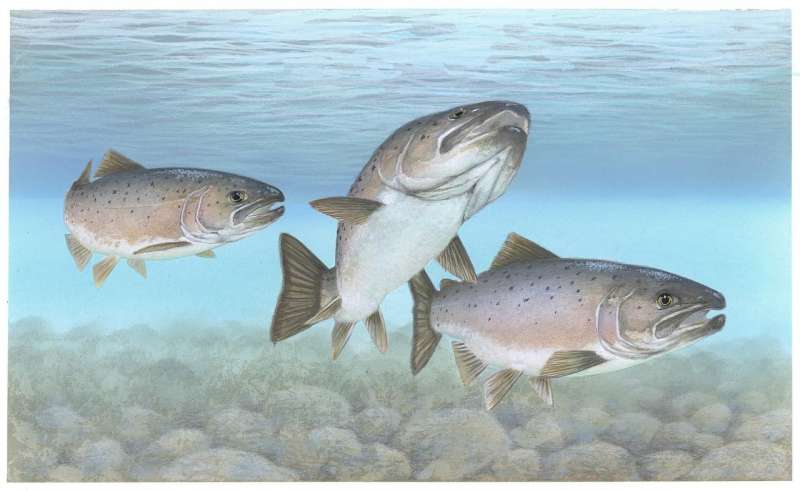This article has been reviewed according to Science X's editorial process and policies. Editors have highlighted the following attributes while ensuring the content's credibility:
fact-checked
trusted source
proofread
Assessing organohalogen contamination impact on the health of Baltic Atlantic salmon

The Baltic Sea Atlantic salmon (Salmo salar) consists of both wild and hatchery-reared fish. As these salmon forage for food, they migrate through various areas of the Baltic Sea and are exposed to a variety of environmental stresses, including exposure to organohalogen compounds (OHCs).
This study aimed to determine how salmon origin (wild or hatchery-reared), feeding area (Baltic Sea mainstem, Bosnian Sea, Gulf of Finland), and OHC concentrations affect the salmon liver proteome (protein expression profile), transcriptome (RNA expression profile), and oxidative stress markers. The work is published in the journal Ecotoxicology and Environmental Safety.
The researchers performed a multi-level analysis measuring OHC concentration, transcriptome, proteome, and oxidative stress markers from the same individual salmon. This approach allowed them to determine the main factors (e.g., feeding area, OHC concentration, and oxidative stress) that contribute most to the variation in the transcriptome and proteome among different groups of salmon.
Comparison of wild and hatchery-reared salmon revealed differences in pathways related to xenobiotic and amino acid metabolism. Furthermore, comparison of salmon from different feeding areas revealed marked differences in metabolic pathways for amino acids and carbohydrates. Some of these pathways were correlated with polychlorinated biphenyl (PCB) concentrations.
Multi-level analysis suggested that the Baltic salmon liver proteome, together with the transcriptome, is influenced more by OHC concentrations and oxidative stress levels in the feeding area than by their origin (wild or hatchery-reared).
More information: Mirella Kanerva et al, Multi-level assessment of the origin, feeding area and organohalogen contamination on salmon from the Baltic Sea, Ecotoxicology and Environmental Safety (2023). DOI: 10.1016/j.ecoenv.2023.115424
Provided by Ehime University


















